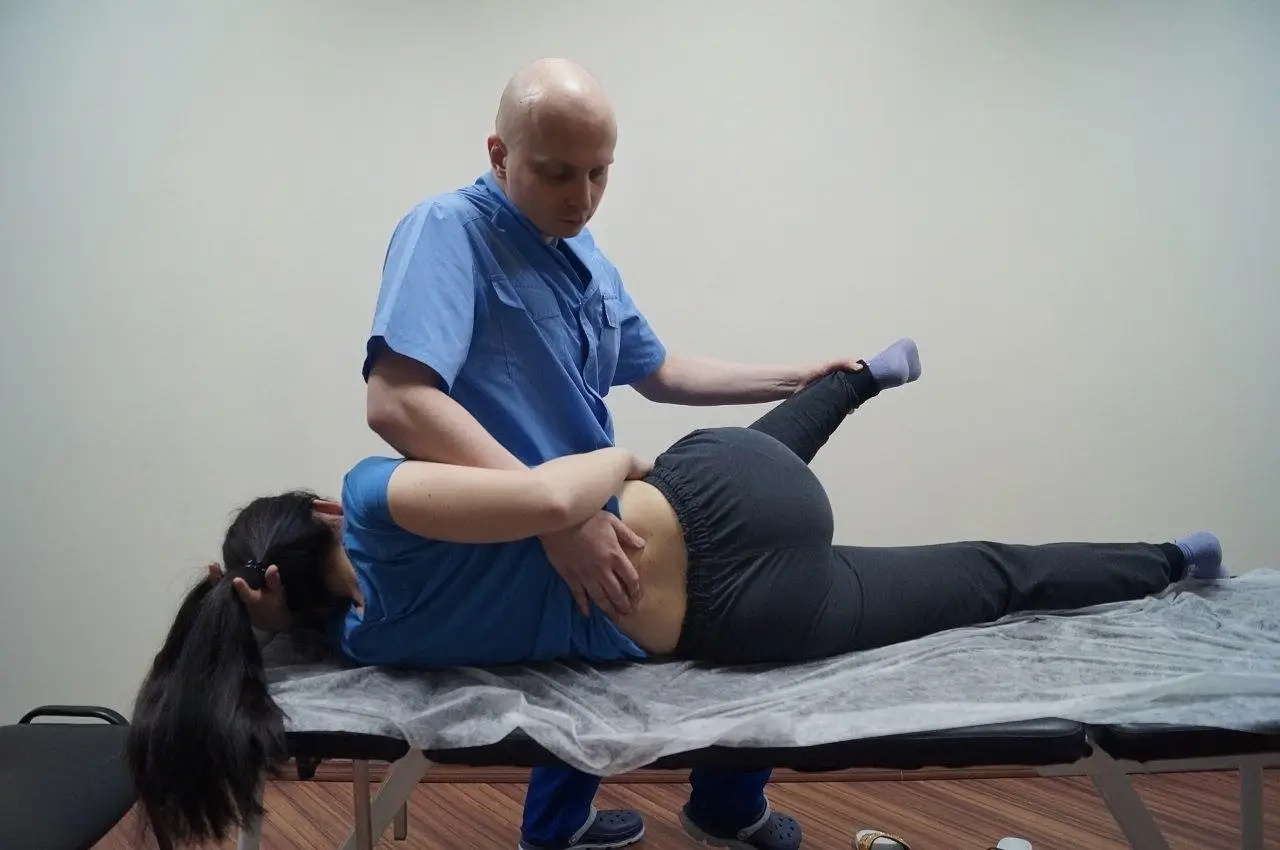

Osteopath - questions
What do people ask an osteopath?
 Questions to ask an osteopathThe following are answers to some common questions, I will gradually expand their list. It is also recommended to read about the first visit to an osteopath. Former patients are no longer surprised, but for those who are for the first time - it certainly does not hurt.
Questions to ask an osteopathThe following are answers to some common questions, I will gradually expand their list. It is also recommended to read about the first visit to an osteopath. Former patients are no longer surprised, but for those who are for the first time - it certainly does not hurt.
Do I need a referral from the attending physician?
Many patients are referred to osteopaths by their doctors, other health professionals or personal trainer. However, as an osteopath is a primary care doctor, you can make an appointment directly without a referral.
What do I need to bring with me?
Bring any x-rays, scans or test results you may have. Consultations with other specialists, their appointments and recommendations will also be helpful.
What happens at the first consultation?
- Your doctor will ask questions about your problem and symptoms. He or she may also ask questions about your medical history, what medications you are taking, or other factors that may be directly related to your problem. If your condition changes during osteopathic treatment, you should let your osteopath know.
- Next, your osteopath will carry out a full osteopathic examination and, if necessary, clinical tests. This may include diagnostic, orthopedic and neurological tests, posture assessment and activities or exercises to help determine how to improve your condition.
- The examination may include passive and active movements. Because osteopathy takes a holistic approach to treatment, your practitioner may look at other parts of the body as well as an area that is not bothering you. For example, if you have knee pain, your osteopath may also look at your ankles, pelvis and back.
- Your osteopath may also give advice to help you manage your condition between treatments. This may include exercises to do at home or at work.
Is osteopathic treatment painful?
Osteopathy is a form of manual therapy, so practical treatment may include massage, stretches, repetitive movements, mobilizations and/or manipulations.
In general, osteopathic treatment is gentle and should not cause undue discomfort. If your injuries require hands-on treatment of painful and tender areas, your osteopath will take care to make you as comfortable as possible.
Some people experience a little pain for a day or two after treatment, similar to that felt after exercise. If this pain persists or increases significantly longer, call your osteopath to discuss your concerns.
How long will my treatment last?
Your initial consultation may last up to one hour. This will allow your doctor to thoroughly ask about your history, examine and treat you. Subsequent treatments are usually shorter. Depending on your condition, they may take 30-45 minutes.
How many treatments do I need?
The number of treatments you need depends on your condition. Your osteopath will be able to tell you within a short period of time whether he can help you or whether he should refer you to someone else.
Generally, you can expect to see some change in your symptoms after one or two visits, however some long term or chronic conditions may require a longer course or more frequent referrals. If you have any questions, your doctor will be happy to discuss them with you.
Do I need further tests or treatment?
Following treatment, your osteopath may decide that you require further investigations such as x-rays, scans or blood tests. This will allow a more accurate diagnosis to be made and an appropriate treatment plan to be developed for you. If necessary, your osteopath may refer you to another doctor.
What is the difference between osteopathy, physiotherapy and chiropractic care?
Osteopathy has over 3,500 techniques, while manual therapy has no more than 100. Osteopathy is based on a holistic approach to treating the body as a whole, rather than a specific part of the body, as all parts of the body are interconnected and inseparable. Disruption of the function of one part of the body can often lead to discomfort in another.
Osteopathy was one of the first professions to incorporate biomechanical analysis of how injuries occur and what the possible consequences of that injury may be by analyzing their anatomical interrelationships. For example, if you have spinal problems, an osteopath will do much more than just examine your back. He or she will ask you how and when your problems started, as well as examine other parts of your body that may be related to your back problems, or possibly actually causing them. Osteopathy looks for and treats the cause of the problem, rather than treating pain as a symptom.
Does osteopathy promote long-term prevention?
Osteopaths teach their patients how to take responsibility for their health. They show them how to make changes in their daily lives and activities to prevent injuries and problems.
Osteopathic preventive care is delivered in several ways:
- By teaching patients how to become more aware of their posture and how to correct it
- By teaching patients proper body mechanics, how to avoid injury and use their body effectively
- By making patients aware of what contributes to or aggravates their problem and how to avoid it, either by changing their habits or by changing their environment (i.e. modifying their workplace, choosing a proper bed...).
Is exercise part of osteopathic therapy?
Yes. Osteopathic philosophy supports the idea that the body has everything potentially necessary to normalize itself. An osteopath will use techniques to correct lesions and teach the patient a few very specific exercises necessary to support the correction. These exercises will be very effective and will never take more than five minutes a day.
Is osteopathic treatment safe?
Osteopathy is one of the safest medical treatments available. It respects the body's signals during and after treatment, and responds to them adequately. Osteopaths are well trained to recognize any condition where treatment cannot be recommended and referral to another specialist is necessary. An osteopath will choose methods that are appropriate for each individual patient and safety is always prioritized.
Is osteopathy always enough?
No. Osteopathy is one element in the treatment. An osteopath can never replace a dentist, surgeon, therapist or psychiatrist. Competent osteopaths should recognize the limits of their abilities and refer patients to another practitioner if necessary.
Communication methods:
Write in watsapp, there we will clarify the variant, time of video consultation and/or you will receive a link to the questionnaire.
In the future you will only need a Google account and will use their convenient services Forms (questionnaire), Docs (materials with recommendations), Meet (video call, we can choose other options).
Write on Telegram




